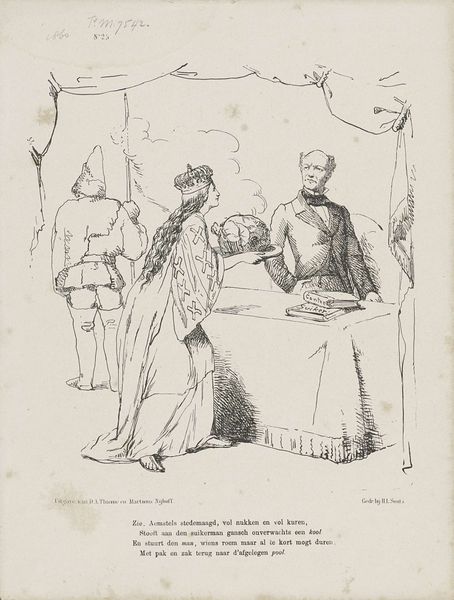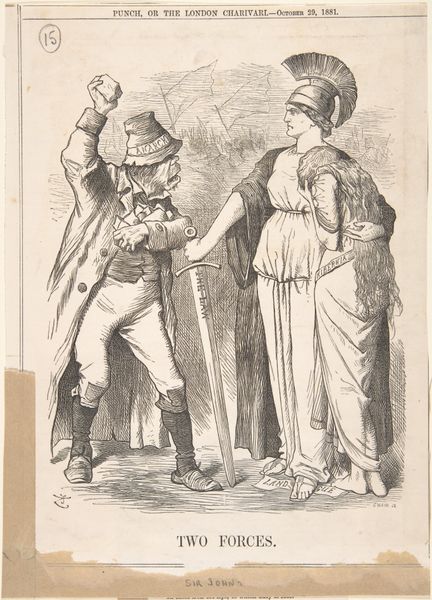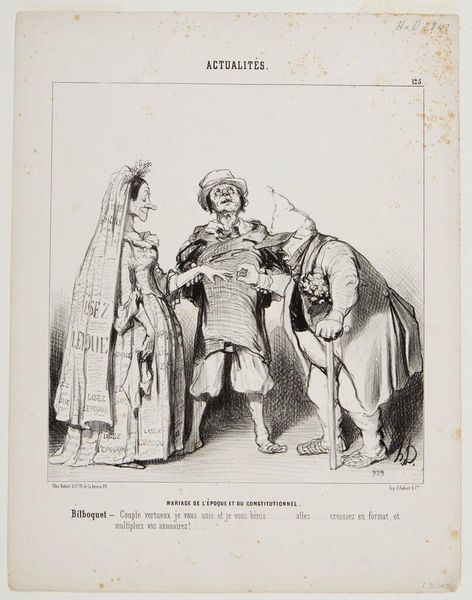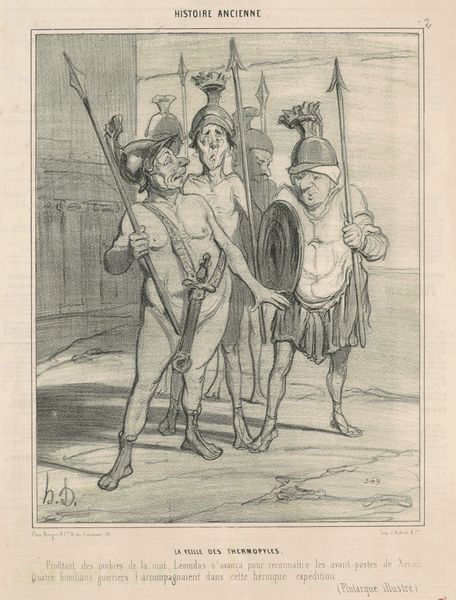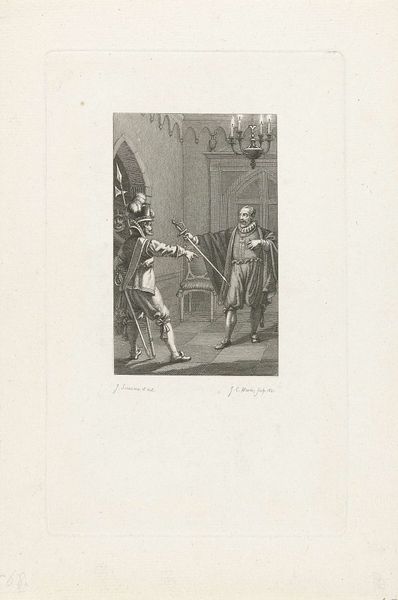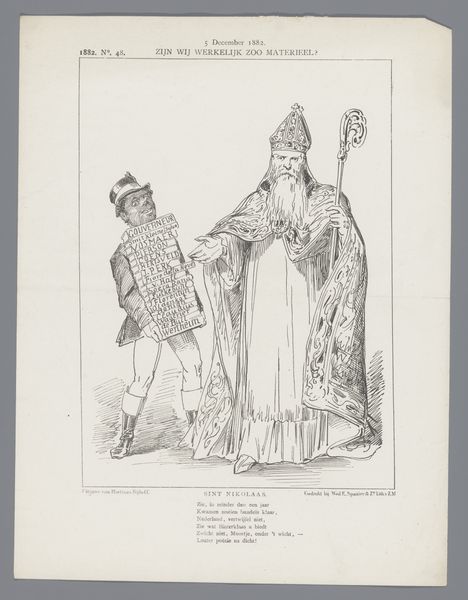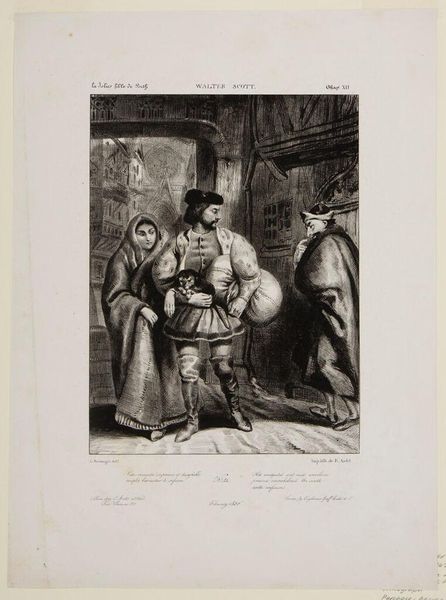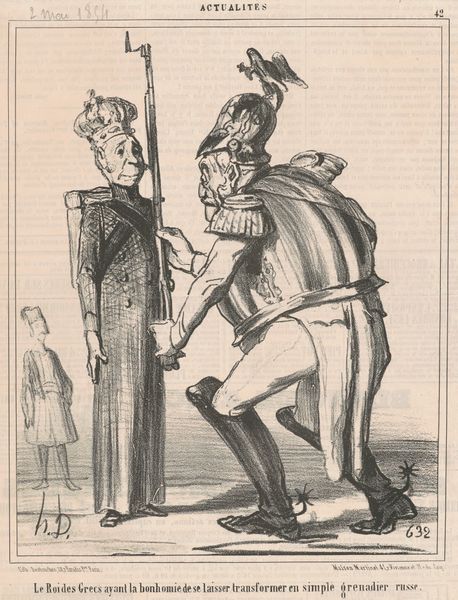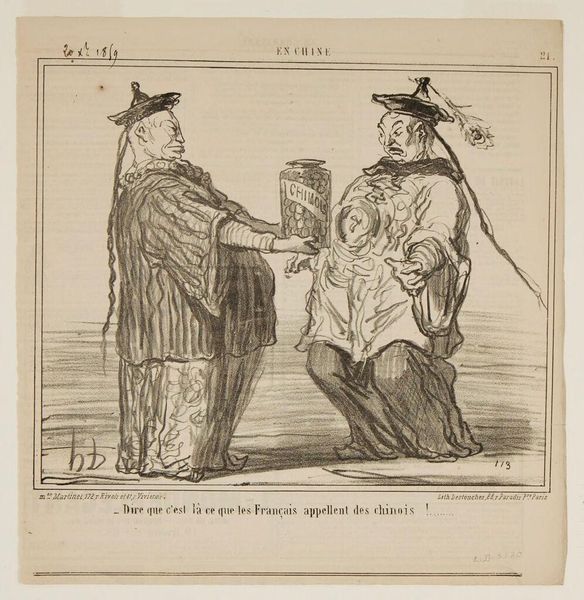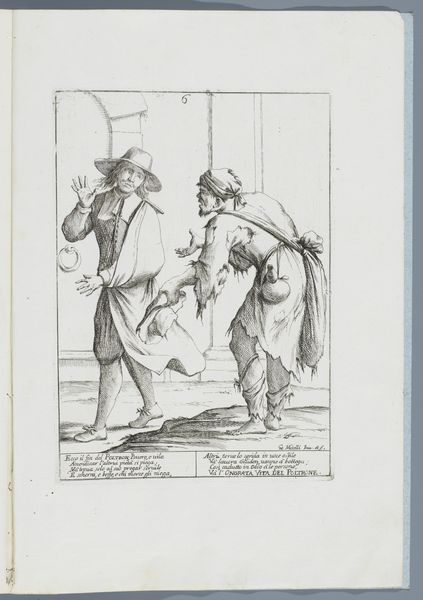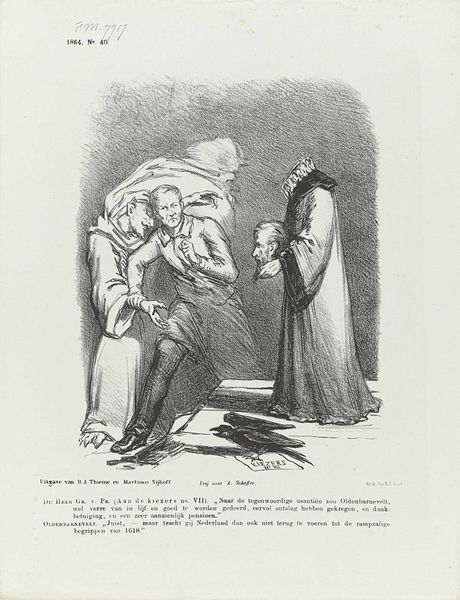
Spotprent op J.A. Keurenaer, directeur van de Deltsche Academie, 1861 1861
0:00
0:00
drawing, pencil
#
portrait
#
drawing
#
caricature
#
pencil sketch
#
pencil
Dimensions: height 360 mm, width 270 mm
Copyright: Rijks Museum: Open Domain
Curator: Here we have an 1861 drawing from an anonymous artist entitled “Spotprent op J.A. Keurenaer, directeur van de Deltsche Academie, 1861." Editor: My immediate reaction is that this is more than a portrait. It has this whimsical almost theatrical tone created with only a limited range of tonal values achieved in what looks to be charcoal. I wonder about the implications of such staged and allegorical portraiture. Curator: The pencil sketch shows a satirical scene involving a small, formally dressed man pointing accusingly at a seated figure of Minerva, complete with helmet, shield, and owl. Behind the small man, we see a leaning tower constructed from what looks to be dice. It's all quite carefully rendered, demonstrating control and skill despite the caricature nature of the piece. The lines delineate figures clearly and emphasize the composition's depth of meaning as it communicates the context of its creation. Editor: It certainly underscores an intriguing tension. The medium itself – pencil – is easily accessible, cheap even, pointing to potential production of similar pieces and wider consumption through newspaper reproduction, making it very democratic and mass-produced in nature. What impact could have the director of the Academy being depicted like that have had at the time? Did that potentially influence people’s opinion on his ability to direct or dictate at the academy? It surely does a number on any authority that director may have projected. Curator: Precisely. And consider how this satirical commentary is further emphasized. The dice and classical figures signal a cultural context, engaging a specific educated viewer. However, it’s not only an intellectual jibe; the small figure’s accusing posture coupled with the inscription at the top seems rooted in real social critique aimed towards Mr. Keurenaer's direction style at the Delft Academy. Editor: Right, this is a space to examine production through both labor and context and it definitely gives much to think about when questioning who has the power to assign value to art within certain structures and contexts. The use of what seems like classical language in Dutch adds even more of a complex contextual component of understanding, which shows us that there might even be class hierarchies intertwined into it. Curator: Ultimately, this drawing displays that potent interplay between formal representation and tangible commentary; where aesthetic components are strategically exploited to bolster a forceful message regarding J.A. Keurenaer’s directorship during that period in 1861. Editor: And to consider not only a satirical commentary and social hierarchy critique, but to ask how such pieces question material values associated to fine art in that precise moment by also reflecting on the power relationships that shape art production and discourse during the time it was done.
Comments
No comments
Be the first to comment and join the conversation on the ultimate creative platform.
